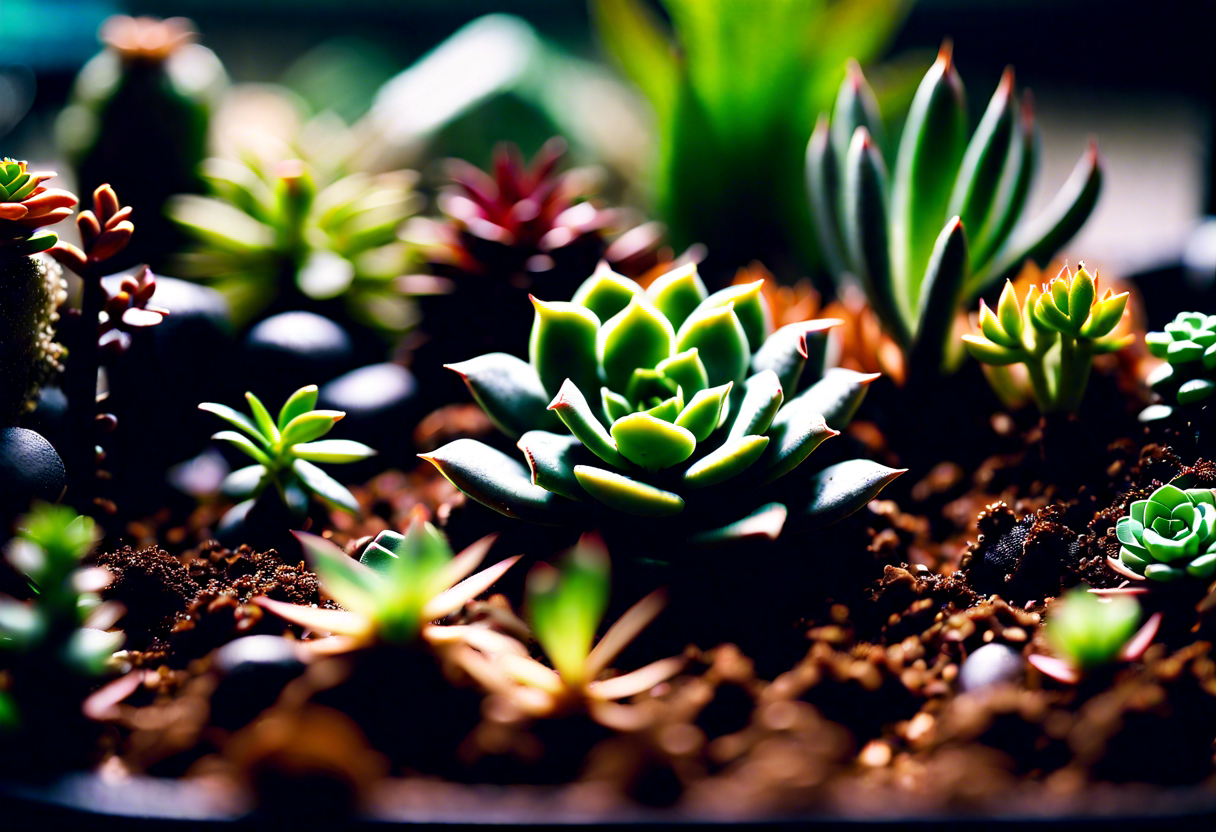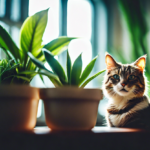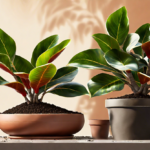Benefits of Using an Indoor Succulent Soil Mix
Why Choose Indoor Succulent Soil Mix for Your Plants
For those who enjoy cultivating indoor succulents, having the right soil mix is essential to ensure the health and longevity of these plants. Indoor succulent soil mix is specifically formulated to meet the unique needs of succulents, providing numerous benefits that help them thrive in indoor environments. In this article, we will explore the advantages of using indoor succulent soil mix and how it can benefit your plants.
One of the primary benefits of using indoor succulent soil mix is its excellent drainage properties. Succulents, known for their ability to store water in their leaves, stems, or roots, are highly susceptible to root rot if excess water is not properly drained. Indoor succulent soil mix is typically composed of a mixture of materials such as coarse sand, perlite, and gravel, which allows excess water to drain effectively. This prevents waterlogged soil and helps maintain the optimal moisture level for succulents, preventing root rot and other related diseases.
Additionally, indoor succulent soil mix promotes adequate airflow around the roots of the plants. The combination of coarse sand, perlite, and gravel in the soil mix creates air pockets, ensuring that the roots receive sufficient oxygen. This is crucial for the healthy development of succulents, as oxygen is necessary for various metabolic processes and helps prevent the growth of harmful bacteria or fungi.
Indoor succulent soil mix also provides a stable and well-balanced medium for succulents to establish their roots. The mix consists of components with varying particle sizes, which allows for better soil structure. This structure enables the roots to anchor themselves firmly and absorb nutrients efficiently. Moreover, the soil mix provides the necessary support for the plants, preventing them from tipping over or becoming unstable as they grow.
Moreover, indoor succulent soil mix is often supplemented with organic matter and nutrients specially formulated for succulents. These additions nourish the plants and promote healthy growth. The organic matter in the soil mix improves the soil’s ability to retain moisture without becoming waterlogged, while the added nutrients contribute to the overall vitality and resilience of the succulents.
Using indoor succulent soil mix simplifies the care and maintenance of your indoor succulents. Its excellent drainage properties, adequate airflow, and balanced structure minimize the risk of overwatering or nutrient deficiencies. This means you can spend less time worrying about the intricacies of succulent care and more time enjoying the beauty of your plants.
Incorporating indoor succulent soil mix into your indoor gardening routine offers numerous benefits for your succulents. From its excellent drainage and airflow properties to its support for root development and nutrient-rich composition, this soil mix provides the ideal growing conditions for indoor succulents. So, whether you’re a seasoned succulent enthusiast or just starting with indoor gardening, using indoor succulent soil mix is a wise choice to ensure the health and vitality of your plants.
Benefits of Using an Indoor Succulent Soil Mix
The Importance of a High-Quality Indoor Succulent Soil Mix
When it comes to growing indoor succulents, the soil mix you choose plays a crucial role in the overall health and vitality of your plants. Succulents have unique needs, and using the right soil mix can provide them with an optimal growing environment. Here’s why a high-quality indoor succulent soil mix is so important.
Proper Drainage:
One of the key reasons why succulents thrive in a well-draining soil mix is because it helps prevent overwatering. Indoor succulents are prone to root rot, especially if they’re not planted in a soil mix that allows excess water to escape. A high-quality succulent soil mix will contain ingredients like perlite, pumice, or sand, which promote adequate drainage and avoid waterlogged roots.
Nutrient Absorption:
Succulents have unique nutrient requirements compared to other houseplants. They prefer soil that is lean in nutrients to avoid over-fertilization, which can harm their growth. A good indoor succulent soil mix should contain a blend of organic materials such as compost or coco coir, which provide some nutrients without overwhelming the plants. These organic materials also help retain moisture for longer periods, aiding in the survival of indoor succulents with their water-storing capabilities.
Preventing Soil Compaction:
Indoor succulents often grow in containers, and their roots need room to breathe and expand. When a soil mix becomes compacted over time, it can restrict root growth and hamper the overall health of the plant. A high-quality succulent soil mix, with its coarse texture and good drainage properties, helps prevent soil compaction. This allows for better root development, which in turn promotes healthier indoor succulents.
Reducing Pest and Disease Risks:
Succulents can be vulnerable to pests and diseases, especially when their environmental conditions are suboptimal. A well-chosen indoor succulent soil mix can reduce these risks by providing a balanced and clean growing medium. Avoiding soil mixes that contain excessive organic matter or are prone to attracting pests can help keep your succulents healthy and pest-free.
Enhancing Aesthetics:
Apart from the benefits to the plants themselves, a high-quality indoor succulent soil mix can also enhance the overall aesthetics of your indoor garden. Succulent soil mixes with a well-balanced texture and composition not only provide the necessary support and moisture retention for the plants but also create an attractive display. This can elevate the visual appeal of your indoor succulent arrangements and make them more enjoyable to showcase.
Using a high-quality indoor succulent soil mix is crucial for the health and success of your indoor succulents. Proper drainage, optimal nutrient absorption, preventing soil compaction, reducing pest and disease risks, and enhancing the overall aesthetics are just a few of the benefits that a well-chosen soil mix can provide. Invest in a quality succulent soil mix, or create your own by following recommended recipes, and watch your indoor succulents thrive and flourish.
How to Create Your Own Indoor Succulent Soil Mix
Choosing the right soil mix is crucial for the health and growth of your indoor succulents. While pre-packaged soil mixes are readily available, creating your own indoor succulent soil mix can give you more control over the composition and quality. By incorporating a few key components, you can ensure that your succulents thrive in their indoor environment.
The first essential component of an indoor succulent soil mix is a well-draining medium. Succulents are native to arid regions and have adapted to survive in environments with limited water availability. Therefore, it is crucial to provide a soil mix that allows excess water to drain quickly. This helps prevent overwatering, which can lead to root rot and other issues. A popular choice for a well-draining medium is coarse sand or pumice, which enhances drainage and facilitates aeration.
In addition to a well-draining medium, adding organic matter to your soil mix can improve its overall quality. Organic matter, such as compost or peat moss, helps retain moisture while enhancing the soil’s nutrient content. This is particularly important for indoor succulents as they have limited access to natural sources of nutrients. Including organic matter in your soil mix can provide a steady supply of nutrients to your succulents, promoting healthy growth.
Furthermore, incorporating perlite or vermiculite into your soil mix can improve the soil’s drainage and aeration. These materials help create air pockets within the soil, allowing the roots of your indoor succulents to breathe. Additionally, perlite and vermiculite aid in moisture retention, ensuring that your succulents receive adequate hydration without the risk of waterlogging.
When creating your indoor succulent soil mix, it is crucial to strike a balance between drainage and moisture retention. While succulents require well-draining soil, they also need some moisture to survive. Achieving this balance can be accomplished by blending the well-draining medium, organic matter, and additional additives mentioned earlier in appropriate proportions. Experimenting with different ratios can help you find the ideal soil mix for your indoor succulents.
To create your indoor succulent soil mix, combine two parts of the well-draining medium (such as coarse sand or pumice), one part of organic matter (compost or peat moss), and one part of perlite or vermiculite. Mix these ingredients thoroughly to ensure even distribution. You can adjust the ratios based on your succulents’ individual needs and preferences.
By creating your own indoor succulent soil mix, you can tailor it specifically to the needs of your plants. The well-draining medium, organic matter, and additives work together to provide an optimal environment for your indoor succulents to thrive. Remember to water your succulents sparingly and allow the soil to dry out between waterings. With the right soil mix and proper care, your indoor succulents will flourish and bring a touch of natural beauty to your living space.
Best Practices for Using Indoor Succulent Soil Mix
When it comes to growing indoor succulents, using the right soil mix is crucial for their health and overall well-being. While succulents are known for their ability to thrive in arid conditions, using the proper soil mix can make a significant difference in their growth and longevity. Here are some best practices to keep in mind when using indoor succulent soil mix:
1. Choose a Well-Draining Soil Mix:
Indoor succulents require a soil mix that provides excellent drainage. This ensures that excess water doesn’t linger around the roots and cause them to rot. Ideally, the soil should be well-draining and allow water to pass through easily. A mixture of potting soil, perlite, and coarse sand is a popular choice for indoor succulent soil mix.
2. Provide Adequate Air Circulation:
Succulents thrive in environments where there is sufficient air circulation. This helps prevent the buildup of excess moisture around the plants, which can lead to fungal infections and root rot. When using indoor succulent soil mix, ensure that the pots have adequate drainage holes and are placed in well-ventilated areas.
3. Water Sparingly:
One common mistake many succulent enthusiasts make is overwatering their plants. Succulents have adapted to survive in dry conditions, and their water needs are significantly lower compared to other plants. When using indoor succulent soil mix, it’s essential to water sparingly and only when the soil is completely dry. This helps prevent the risk of root rot and other water-related issues.
4. Consider the Environment:
Your indoor environment plays a significant role in the success of your succulents. Different succulent species have varying light and temperature requirements. Before using indoor succulent soil mix, consider the specific needs of your succulents and ensure they are placed in an environment that suits their requirements. Some succulents thrive in bright, indirect light, while others prefer partial shade.
5. Monitor for Pests:
Pests, such as mealybugs and spider mites, can wreak havoc on your indoor succulents. Regularly inspect your plants for any signs of pest infestations, such as webbing, discoloration, or sticky residue. If you notice any pests, treat them promptly using organic pest control methods or insecticidal soap.
6. Avoid Overfertilizing:
While fertilizing can be beneficial for succulents, it’s important not to overdo it. Using a well-balanced, controlled-release fertilizer specifically formulated for succulents can help provide the necessary nutrients. However, applying too much fertilizer can lead to salt buildup in the soil, causing harm to the roots. Follow the instructions on the fertilizer packaging and apply it sparingly.
Using the right indoor succulent soil mix and following best practices will help ensure the health and vitality of your indoor succulents. By choosing a well-draining soil mix, providing adequate air circulation, and watering sparingly, you can create an optimal environment for your succulents to thrive. Additionally, considering the specific needs of your succulents, monitoring for pests, and avoiding overfertilizing are all important factors to keep in mind. With proper care and attention, your indoor succulents will flourish and bring beauty to your living space.
Common Mistakes to Avoid When Using Indoor Succulent Soil Mix
Indoor succulents are popular plants for both experienced gardeners and beginners. They have unique water storage abilities and can thrive in various conditions. One key factor in their success is the soil mix used for planting. However, many people make common mistakes when using indoor succulent soil mix. In this article, we will discuss these mistakes and how to avoid them.
1. Using regular potting soil: One of the biggest mistakes people make is using regular potting soil for their indoor succulents. Succulents require well-draining soil to prevent root rot and ensure proper water distribution. Regular potting soil tends to retain moisture, which can lead to overwatering and root rot. Instead, opt for a specifically formulated indoor succulent soil mix that contains ingredients like perlite, pumice, or coarse sand to promote drainage.
2. Overwatering: Overwatering is a common mistake made by succulent enthusiasts. Succulents are adapted to arid conditions and prefer dry soil between watering. Watering too frequently can cause the roots to rot and eventually kill the plant. It is crucial to allow the soil to dry out completely before watering again. A good practice is to wait until the top inch of soil is dry before watering the succulents.
3. Underwatering: While overwatering is a common mistake, underwatering can be equally detrimental to indoor succulents. It is important to strike a balance and provide enough water to keep the plants healthy. Underwatering can cause the succulents to become dehydrated and wilt. Regularly check the moisture level of the soil and adjust your watering schedule accordingly.
4. Using a container without proper drainage: Succulents thrive in well-draining soil and require a container with proper drainage holes. Using a container without drainage holes can lead to water accumulation at the bottom, causing the roots to sit in stagnant water. This can lead to root rot and eventually kill the plant. Ensure that the container you choose has sufficient drainage holes to allow excess water to escape.
5. Neglecting sunlight requirements: Indoor succulents require an adequate amount of sunlight to thrive. Placing them in low-light areas can result in weak and etiolated growth. It is important to provide them with bright, indirect sunlight or supplement with artificial grow lights if necessary. Regularly rotate the plants to ensure even exposure to sunlight and prevent one-sided growth.
6. Ignoring signs of pest infestation: Succulents are susceptible to pests such as mealybugs, spider mites, and scale insects. Ignoring signs of pest infestation can severely impact the health of your indoor succulents. Regularly inspect the plants for any signs of pests, such as sticky residue, webbing, or tiny crawling insects. If detected, take immediate action to treat the infestation using organic pest control methods.
7. Improper acclimation: When introducing new succulents to your indoor space, it is important to acclimate them gradually to prevent shock. Sudden changes in temperature or light conditions can stress the plants and make them more susceptible to disease and pests. Gradually expose the plants to their new environment by placing them in a shaded area and gradually increasing their exposure to sunlight.
By avoiding these common mistakes, you can ensure the health and vitality of your indoor succulents. Providing the right soil mix, watering regimen, and proper care will help your succulents thrive and beautify your indoor space.
Conclusion
Using an indoor succulent soil mix offers numerous benefits for the successful cultivation of these popular houseplants. The right soil mix promotes proper drainage, aeration, and nutrient availability, which are essential for the health and growth of indoor succulents. A high-quality indoor succulent soil mix consists of key components such as coarse sand, perlite, peat moss or coconut coir, and well-draining potting soil. To create your own soil mix, follow a simple recipe and ensure the correct measurements to achieve the ideal balance of moisture retention and fast drainage. When using the indoor succulent soil mix, it is important to follow best practices such as watering correctly, providing adequate sunlight, and avoiding overfertilization. Additionally, it is crucial to avoid common mistakes such as using regular potting soil, overwatering, or neglecting to monitor the moisture level in the soil. By employing the correct soil mix and following recommended practices, you can create a thriving indoor succulent garden that will bring beauty and joy to your living space for years to come.


